四、interface
(1) interface的赋值问题
以下代码能编译过去吗?为什么?
test12.go
package mainimport ("fmt")type People interface {Speak(string) string}type Student struct{}func (stu *Student) Speak(think string) (talk string) {if think == "love" {talk = "You are a good boy"} else {talk = "hi"}return}func main() {var peo People = Student{}think := "love"fmt.Println(peo.Speak(think))}
继承与多态的特点
在golang中对多态的特点体现从语法上并不是很明显。
我们知道发生多态的几个要素:
1、有interface接口,并且有接口定义的方法。
2、有子类去重写interface的接口。
3、有父类指针指向子类的具体对象
那么,满足上述3个条件,就可以产生多态效果,就是,父类指针可以调用子类的具体方法。
所以上述代码报错的地方在var peo People = Student{}这条语句, Student{}已经重写了父类People{}中的Speak(string) string方法,那么只需要用父类指针指向子类对象即可。
所以应该改成var peo People = &Student{} 即可编译通过。(People为interface类型,就是指针类型)
(2) interface的内部构造(非空接口iface情况)
以下代码打印出来什么内容,说出为什么。
test14.go
package mainimport ("fmt")type People interface {Show()}type Student struct{}func (stu *Student) Show() {}func live() People {var stu *Studentreturn stu}func main() {if live() == nil {fmt.Println("AAAAAAA")} else {fmt.Println("BBBBBBB")}}
结果
BBBBBBB
分析:
我们需要了解interface的内部结构,才能理解这个题目的含义。
interface在使用的过程中,共有两种表现形式
一种为空接口(empty interface),定义如下:
var MyInterface interface{}
另一种为非空接口(non-empty interface), 定义如下:
type MyInterface interface {function()}
这两种interface类型分别用两种struct表示,空接口为eface, 非空接口为iface.
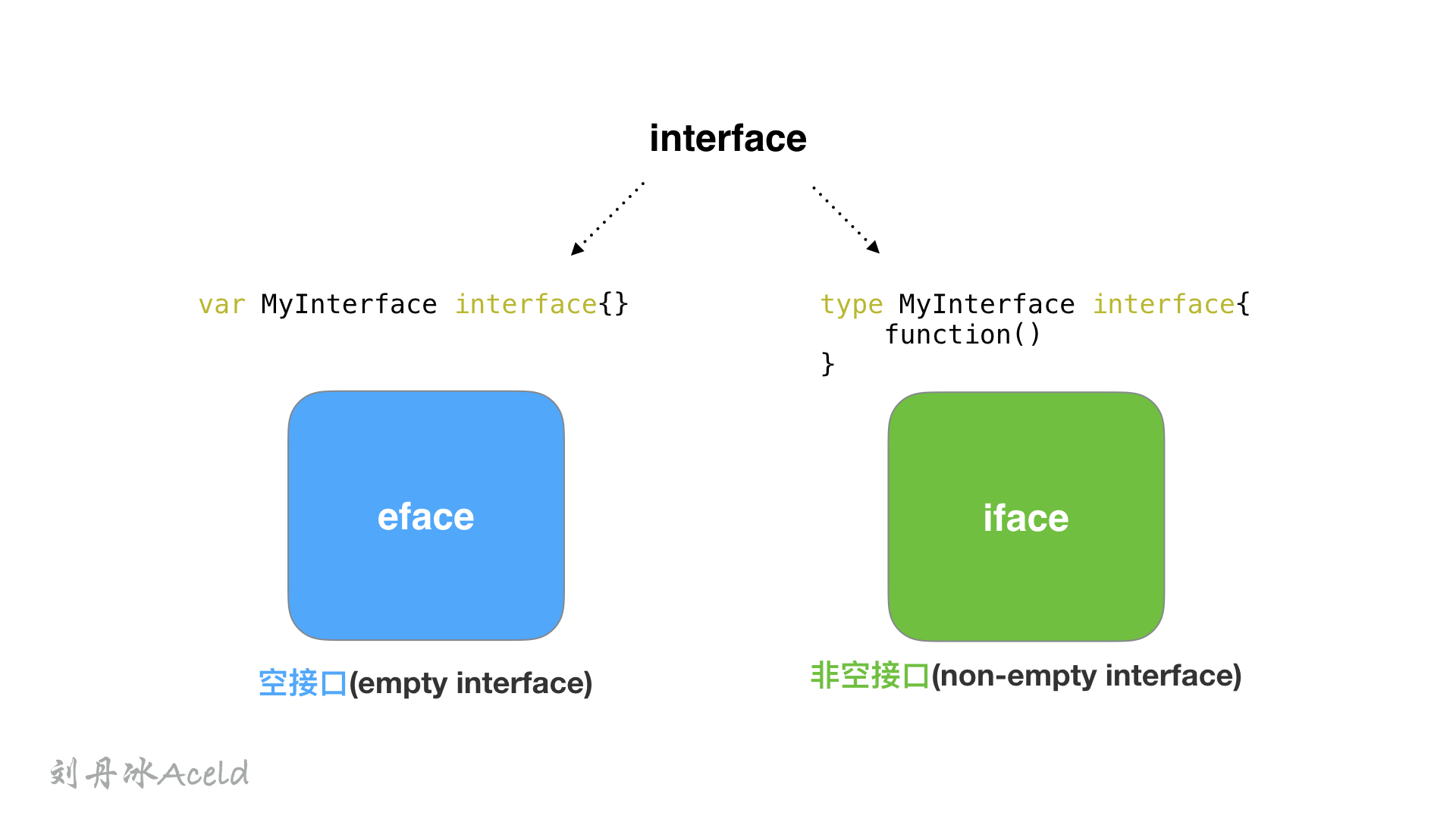
空接口eface
空接口eface结构,由两个属性构成,一个是类型信息_type,一个是数据信息。其数据结构声明如下:
type eface struct { //空接口_type *_type //类型信息data unsafe.Pointer //指向数据的指针(go语言中特殊的指针类型unsafe.Pointer类似于c语言中的void*)}
_type属性:是GO语言中所有类型的公共描述,Go语言几乎所有的数据结构都可以抽象成 _type,是所有类型的公共描述,type负责决定data应该如何解释和操作,type的结构代码如下:
type _type struct {size uintptr //类型大小ptrdata uintptr //前缀持有所有指针的内存大小hash uint32 //数据hash值tflag tflagalign uint8 //对齐fieldalign uint8 //嵌入结构体时的对齐kind uint8 //kind 有些枚举值kind等于0是无效的alg *typeAlg //函数指针数组,类型实现的所有方法gcdata *bytestr nameOffptrToThis typeOff}
data属性: 表示指向具体的实例数据的指针,他是一个unsafe.Pointer类型,相当于一个C的万能指针void*。
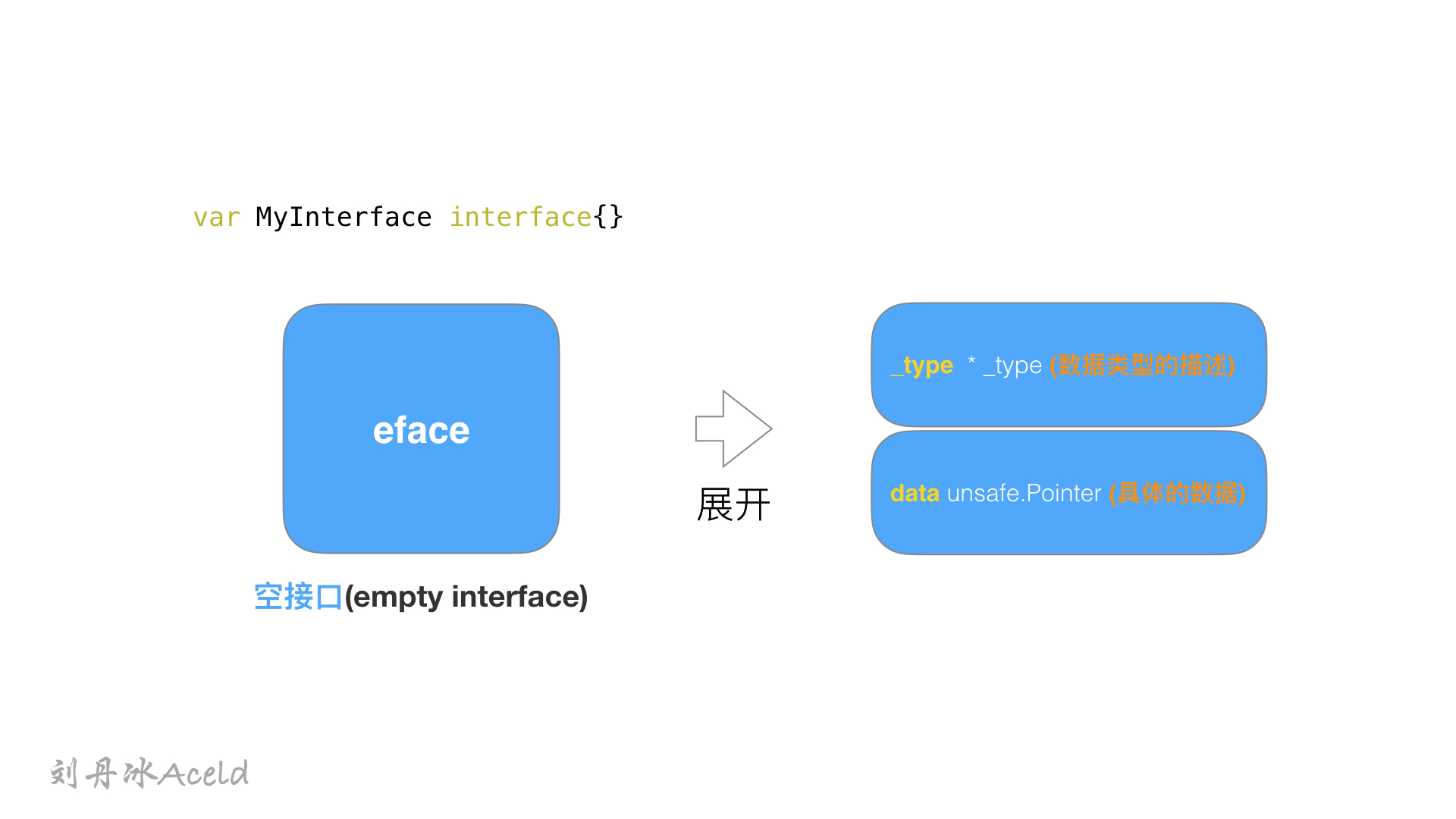
非空接口iface
iface 表示 non-empty interface 的数据结构,非空接口初始化的过程就是初始化一个iface类型的结构,其中data的作用同eface的相同,这里不再多加描述。
type iface struct {tab *itabdata unsafe.Pointer}
iface结构中最重要的是itab结构(结构如下),每一个 itab 都占 32 字节的空间。itab可以理解为pair<interface type, concrete type> 。itab里面包含了interface的一些关键信息,比如method的具体实现。
type itab struct {inter *interfacetype // 接口自身的元信息_type *_type // 具体类型的元信息link *itabbad int32hash int32 // _type里也有一个同样的hash,此处多放一个是为了方便运行接口断言fun [1]uintptr // 函数指针,指向具体类型所实现的方法}
其中值得注意的字段,个人理解如下:
interface type包含了一些关于interface本身的信息,比如package path,包含的method。这里的interfacetype是定义interface的一种抽象表示。type表示具体化的类型,与eface的 type类型相同。hash字段其实是对_type.hash的拷贝,它会在interface的实例化时,用于快速判断目标类型和接口中的类型是否一致。另,Go的interface的Duck-typing机制也是依赖这个字段来实现。fun字段其实是一个动态大小的数组,虽然声明时是固定大小为1,但在使用时会直接通过fun指针获取其中的数据,并且不会检查数组的边界,所以该数组中保存的元素数量是不确定的。

所以,People拥有一个Show方法的,属于非空接口,People的内部定义应该是一个iface结构体
type People interface {Show()}
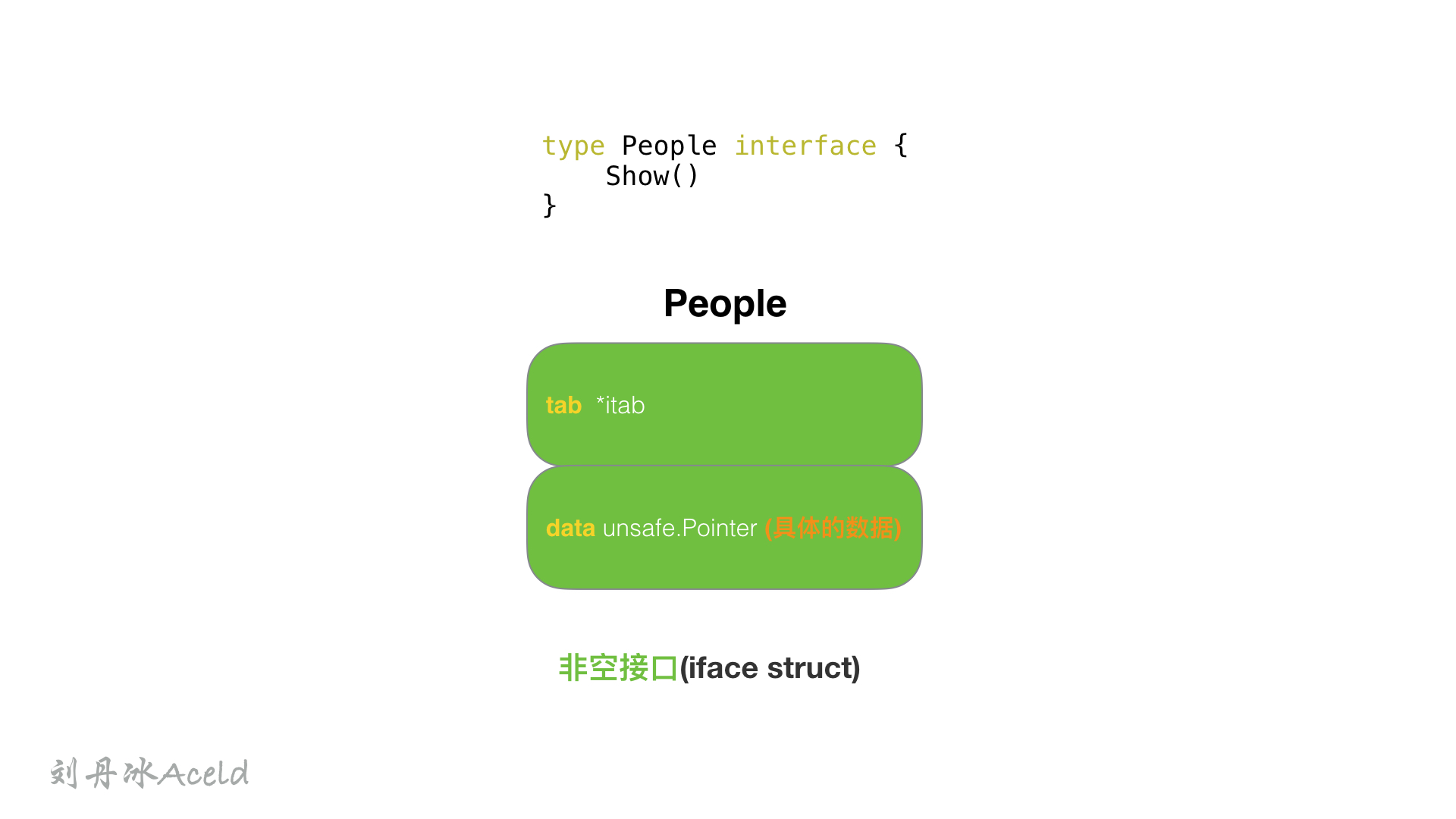
func live() People {var stu *Studentreturn stu}
stu是一个指向nil的空指针,但是最后return stu 会触发匿名变量 People = stu值拷贝动作,所以最后live()放回给上层的是一个People insterface{}类型,也就是一个iface struct{}类型。 stu为nil,只是iface中的data 为nil而已。 但是iface struct{}本身并不为nil.
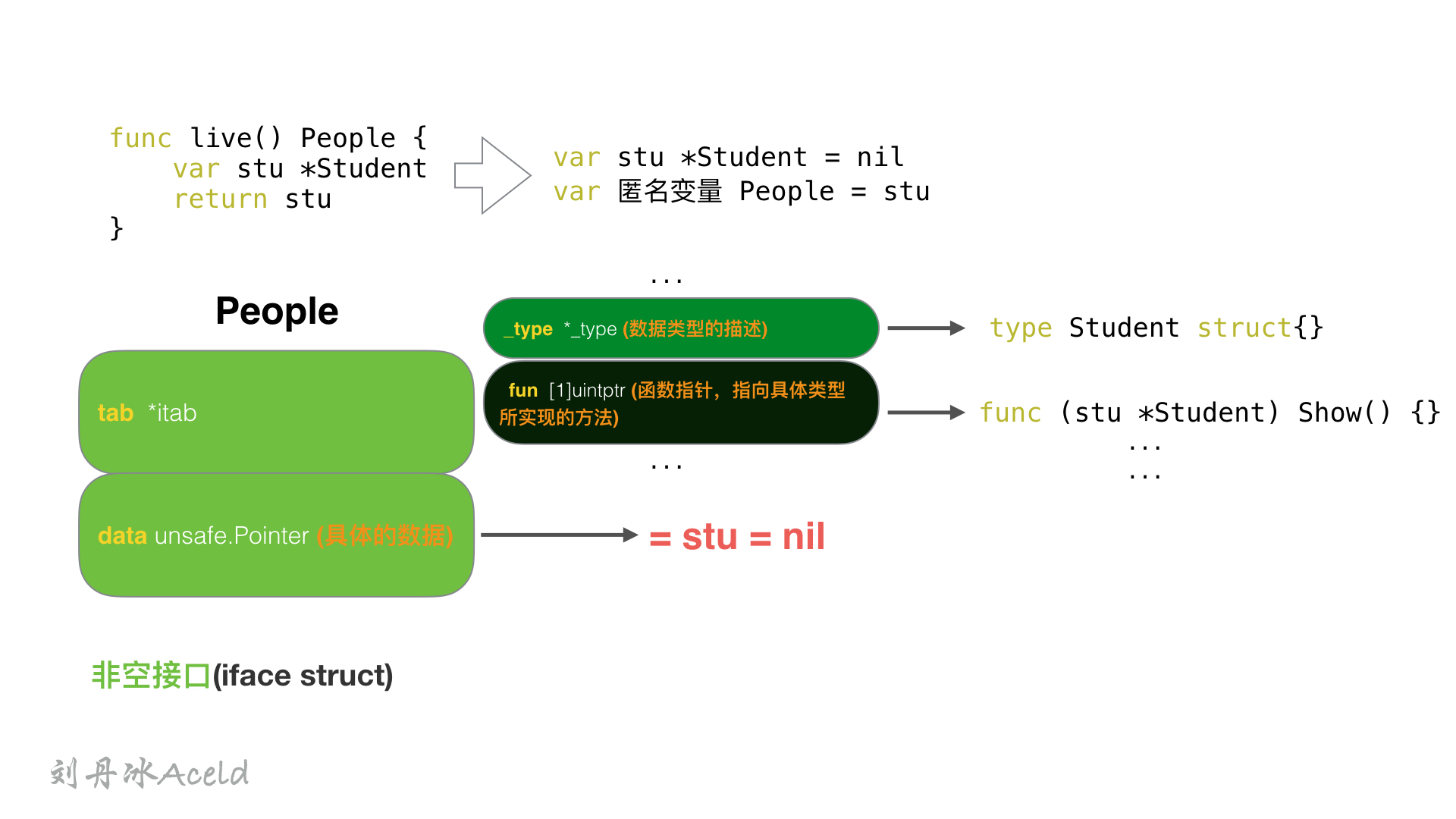
所以如下判断的结果为BBBBBBB:
func main() {if live() == nil {fmt.Println("AAAAAAA")} else {fmt.Println("BBBBBBB")}}
(3) interface内部构造(空接口eface情况)
下面代码结果为什么?
func Foo(x interface{}) {if x == nil {fmt.Println("empty interface")return}fmt.Println("non-empty interface")}func main() {var p *int = nilFoo(p)}
结果
non-empty interface
分析
不难看出,Foo()的形参x interface{}是一个空接口类型eface struct{}。
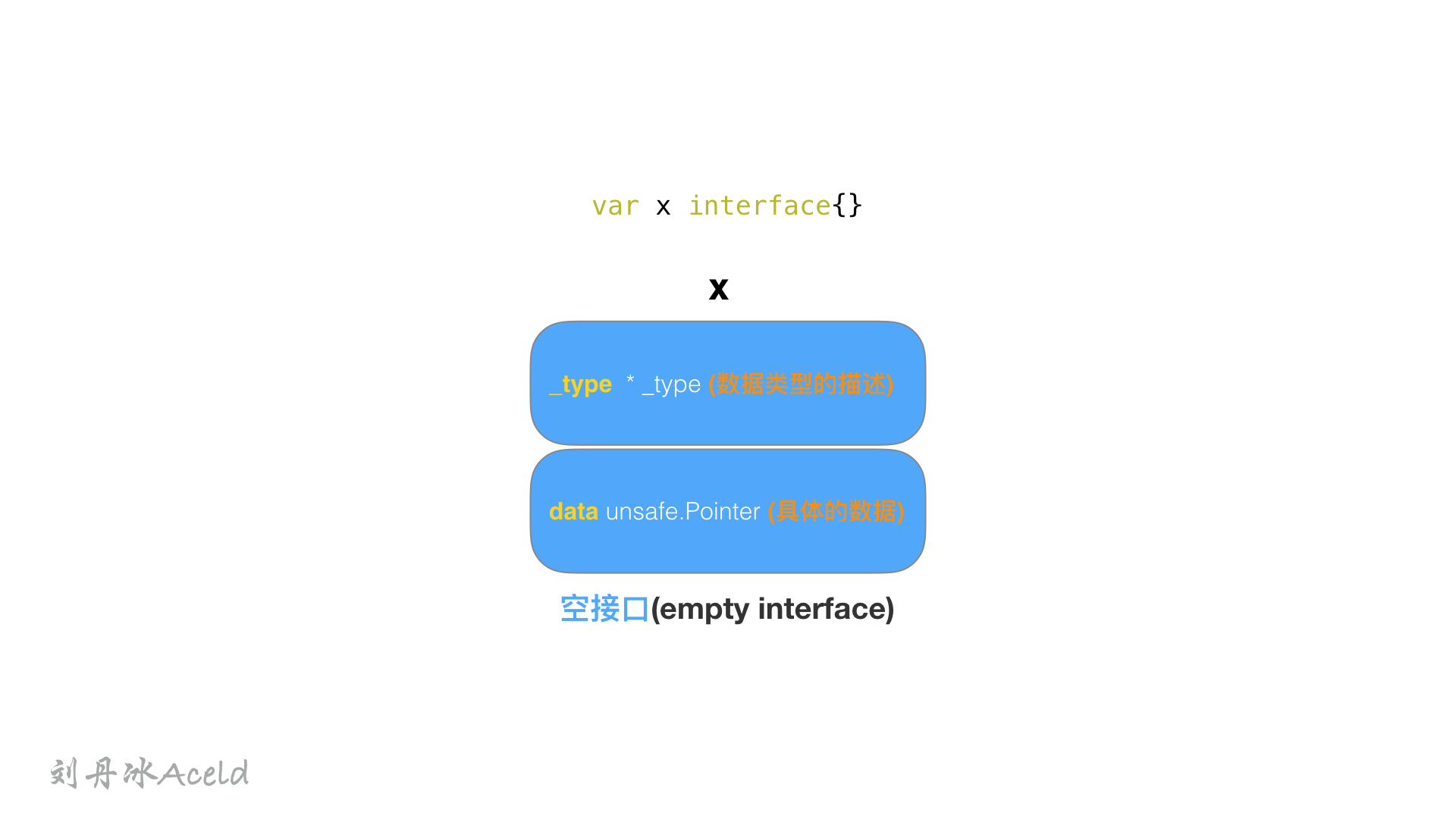
在执行Foo(p)的时候,触发x interface{} = p语句,所以此时 x结构如下。
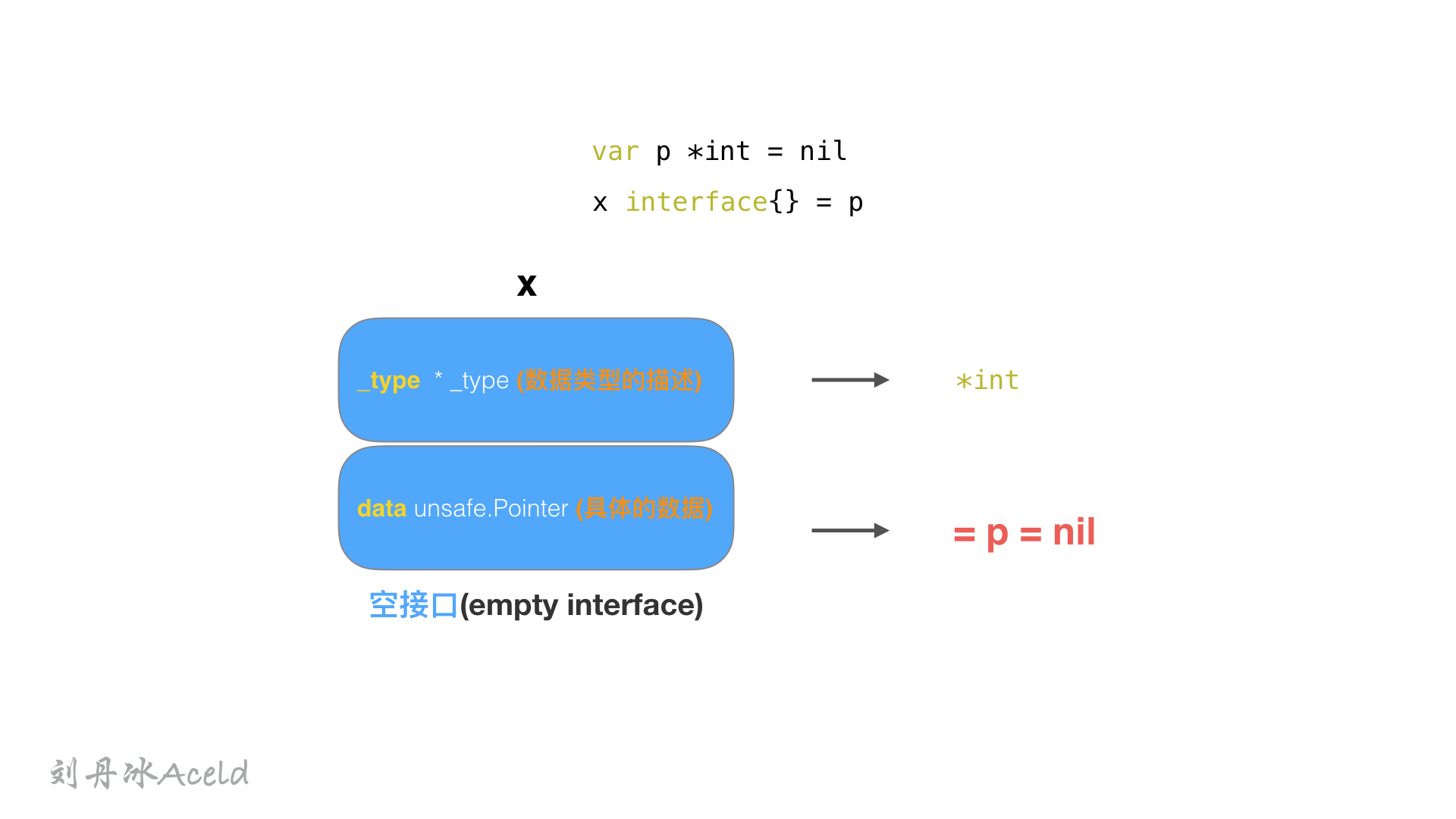
所以 x 结构体本身不为nil,而是data指针指向的p为nil。
(4) inteface{}与*interface{}
ABCD中哪一行存在错误?
test15.go
type S struct {}func f(x interface{}) {}func g(x *interface{}) {}func main() {s := S{}p := &sf(s) //Ag(s) //Bf(p) //Cg(p) //D}
结果
B、D两行错误B错误为: cannot use s (type S) as type *interface {} in argument to g:*interface {} is pointer to interface, not interfaceD错误为:cannot use p (type *S) as type *interface {} in argument to g:*interface {} is pointer to interface, not interface
看到这道题需要第一时间想到的是Golang是强类型语言,interface是所有golang类型的父类 函数中func f(x interface{})的interface{}可以支持传入golang的任何类型,包括指针,但是函数func g(x *interface{})只能接受*interface{}

